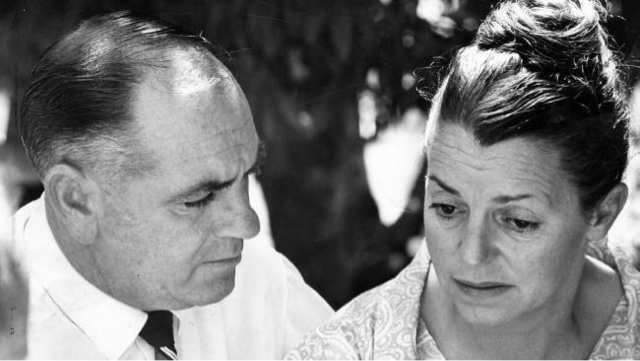There were 12 victims of Axeman of New Orleans which some had died after the attacked and some survived the attacked.
1) Joseph Maggio was an Italian grocer who had been attacked on 22 May 1918 while sleeping with his wife, Catherine Maggio. The killer broke into the home and cut the couple's throats with a straight razor. Before leaving, the killer bashed their heads with an axe. Both Joseph and Catherine Maggio died after the attacked because of the deep cuts. The law enforcement agents then found a bloody clothes which belongs to the killer after attacking the couples.
2) Louis Bumer and his mistress, Harriet Lowe was attacked in the morning of 27 June 1918. Louis was bashed with a hatchet at his head and Harriet was bashed over her left ear. The couple was found bleeding from their heads by John Zanca. The axe that had been used by the killer which belongs to Louis himself was found in the bathroom. On 15 August 1918, Harriet died to a failed surgery while Louis was arrested for attacking Harriet when he found out Harriet had told the police of him being a German spy.
3) Mrs Schneider was attacked in the evening on 5 August 1918. She was 8 months pregnant during the attacked. She was bashed in the face and was completely covered with blood and her scalp had been cut open. Mrs Schneider was found by her husband, Ed Schneirder who returned late from work. She survived the attack but did not remember anything about the attack and gave birth to a baby girl two days after the attack.
4) Joseph Romano was an elderly man who lived with his two nieces, Pauline and Mary Bruno. Joseph was attacked by the killer and had two open cuts on his head. Pauline and Mary said that the killer wore a dark suit and a slouched hat. However, Joseph died two days after the attack due to severe head trauma. Authorities then found a bloody axe at the backyard and a panel of the back door was taken away.
5) Charles Cortimiglia was an immigrant who lived with his wife, Rosie and their baby, Mary. They were attacked in the night of 10 March 1919. Their neighbor, Lorlando Jordano heard a commotion and went to Cortimiglia house to investigate. Jordano found Rosie with a serious head wound while holding her dead baby and Charles laid unconscious while bleeding profusely. Both Charles and Rosie suffered from skull fractures. Nothing was stolen from them but a panel of the back door was taken away. A bloody axe was also found at the porch of the house. Both Charles and Rosie survived the attack but not their baby.
6) Steve Broca was a grocer that was attacked on 10 August 1919. His head had been cracked open and lost consciousness when he seek help from his neighbor, Frank Genusa. Nothing had been taken from Steve's house but a panel of the back door had been taken away. Steve survived the attack but he does not remember anything about the attack.
7) Sarah Laumann was attacked in the night of 3 September 1919. Her neighbors found her lying unconscious on her bed suffering from a severe head injury and several missing teeth. The killer had entered through an open window and attack Sarah with an axe. The bloody axe was then found on the front lawn of the apartment. Sarah survived the attack but she did not remember anything about the attack.
8) Mike Pepitone was attacked in the night of 27 October 1919. He had been bashed on his head and was severely covered with blood. Mike Pepitone was the last of Axeman attack in New Orleans.






























